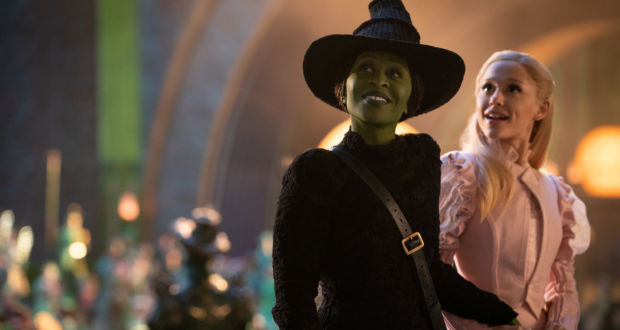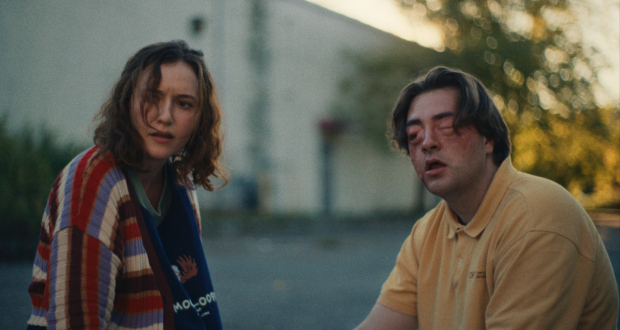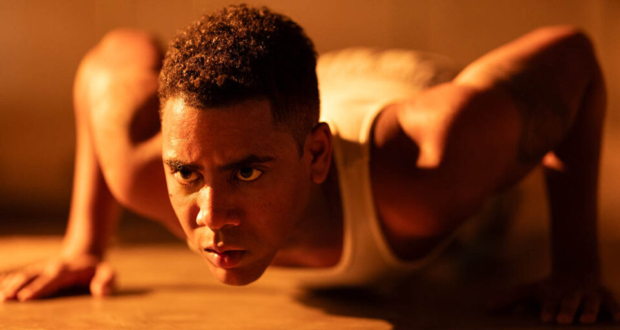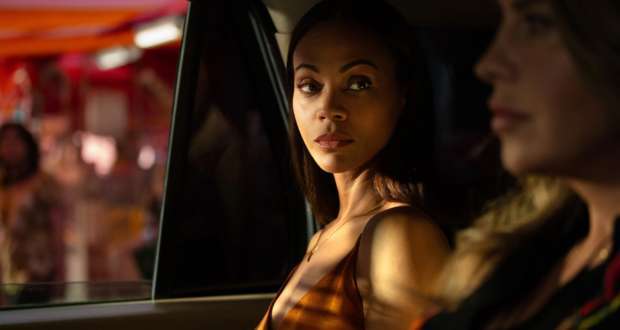Tom Petty in the recording studio with Rick Rubin, from the documentary “Tom Petty, Somewhere You Feel Free.” | Credit: Tom Petty Legacy, LLC / Warner Music Group
The Tom Petty documentary “Tom Petty: Somewhere You Feel Free,” directed by Mary Wharton, depicts his career and his personality using film shot by Marlyn Atkins between 1993 and 1995, during the taping of the “Wildflower” album.
At that time, Tom would have been in his mid-forties and a long way away from his untimely death after just completing the Heartbreakers’ 40th Anniversary tour on October 2, 2017.
Tom’s daughter Aida is listed as an Executive Producer. There will not be undue focus on his death, as that sad event was 24 years in the future when the unused film was discovered and refurbished for use in this story of Tom Petty’s views on life and work.
One thing that comes through is that he was an easy-going guy with a good sense of humor. Aside from conflict with one long-time band member who left after many years (without saying good bye, according to Wikipedia.org), he got along well with his bandmates. There are concert shots and songs performed in the recording studio that Petty had set up. Other scenes are in a room literally crammed with a variety of guitars.
Petty’s move away from record producer Jeff Lynne, who had produced most of the Heartbreakers albums, towards Rick Rubin is addressed. Tom says, “You don’t want to stay in just one little circle all the time.” He had spent 20 years with the Heartbreakers with Lynne producing and, although Rubin had been told that his desire to work with Petty was not going to bear fruit, it did when Petty, himself, called Rubin up about collaborating.
At one point, a band member says, “How can there be this many good songs from one person?” Petty sold over 80 million records and was inducted into the Rock and Roll Hall of Fame in 2002. He described (Wikipedia.org) his desire to become a singer/songwriter as stemming from meeting Elvis Presley when he was 10 years old and referred to the Rolling Stones as “my punk music.”
Never close to his somewhat abusive father, Tom dropped out of high school at seventeen to play bass guitar and dated his desire to have his own band from when he saw the Beatles appear on “Ed Sullivan.” Petty says he knew he could do that, and adds, “I didn’t have any choice. I just did it. I feel very fortunate, because it all worked out.”
While he began in 1976, by 1979 he had a hit with “Don’t Do Me Like That.” Born on October 20, 1950, Tom was married for 22 years to Jane Renyo. Their daughter Adria relates how she knew her parents were splitting up when she heard the songs he was working on for “Wildflowers” in 1994. In fact, Tom and Jane split up in 1996. It would be five years before he would remarry Dana York in 2001.
One period that is glossed over in the documentary came after the recording sessions that provided the basis for the film. From 1996 to 1999 Tom Petty had addiction issues to heroin. He made a decision to break that cycle on his own and went into treatment.
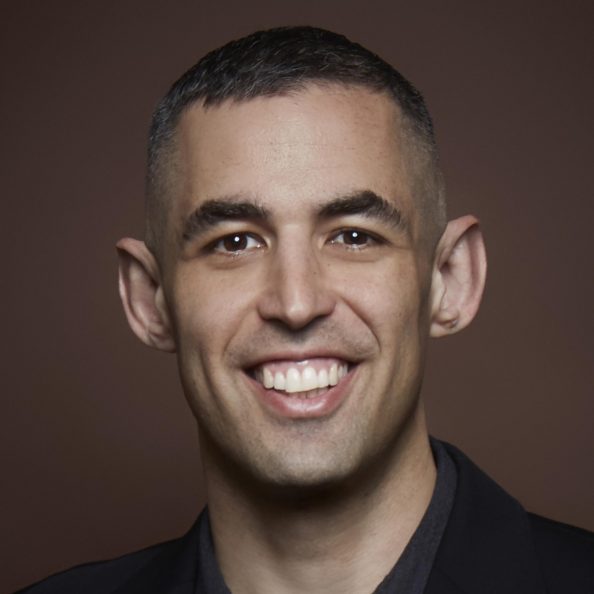 Petty had just finished the Heartbreakers’ 40th Anniversary Tour when he died on October 2, 2017. His wife said he was in a lot of pain from a hip that was fractured and needed surgery. Tom had put off the surgery until the end of the tour, since so many other musicians were counting on him.
Petty had just finished the Heartbreakers’ 40th Anniversary Tour when he died on October 2, 2017. His wife said he was in a lot of pain from a hip that was fractured and needed surgery. Tom had put off the surgery until the end of the tour, since so many other musicians were counting on him.
The autopsy on Petty’s body showed he did have a hip fracture. It also showed these drugs in his system: fentanyl; oxycontin; acetylfentanyl; temazepam; alprazolam; and citalprum. He also suffered from emphysema. He smokes, non-stop, during the film, which makes a lung ailment seem likely.
I saw Tom Petty “live” once, in a concert in Moline, Illinois at the Mark of the Quad Cities. He was in his prime. I was a fan, but not a fanatic.
One interesting later career tid-bit that came out of researching his career: 12.5% of the profits from Sam Smith’s album “Stay With Me” had to be paid to Petty for using much of “I Won’t Back Down” in Smith’s song. The statement from Petty was: “All my years of songwriting have shown me these things can happen. Most times you catch it before it gets out the studio door but in this case it got by. Sam’s people were very understanding of our predicament and we easily came to an agreement”.
-
Acting - /10
0/10
-
Cinematography/Visual Effects - /10
0/10
-
Plot/Screenplay - /10
0/10
-
Setting/Theme - /10
0/10
-
Watchability - /10
0/10
-
Rewatchability - /10
0/10

